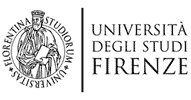Methods for decoration of materials and bioconjugation
Cristina Nativi and Marco Marradi
6 ECTS: 32 hours of lectures and 24 hours of laboratory practice
Aims: The students will be introduced to the chemical functionalization of haptens, antigens and antibodies for the decoration of proteins or nanomaterials (peptides, dendrons, silica nanoparticles, metal nanoparticles). Characterization of the armed, selected haptens. Descriptions of the strategies currently used for the bioconjugation of different antigens to a selected carrier. Bifunctional linkers, how choosing the more convenient. Explaining how the linkers can be grafted to the hapten, antigens and antibodies.
Methods for the preparation of metal and organic nanoparticles in physiological media. Strategies for the bioconjugation of nanomaterials, incorporation of bioactive compounds (genetic material, drugs, haptens, antigens, antibodies), development of specific probes (imaging agents, MRI-active agents, synthetic antigens, radionuclides, optical probes etc).
Main strategies requiring specific and selective technologies at the interface between organic chemistry and materials science. Modern applications in biomedicine: therapy (vaccines, novel antimicrobial agents, gene delivery, phototherapy, smart release of drugs etc..) and diagnostics (anti-drug and anti-synthetic antigen antibodies, molecular imaging, etc).
Lectures:
- Methods for the functionalization of haptens, antigens, antibodies: suitable protections for a convenient activation.
- Methods for multi-haptens and antigens presentation: orthogonal activation of different epitopes.
- Methods for the synthesis, characterization and purification of bifunctional linkers suitable for biocompatible reactions.
- Methods for the preparation of stable dispersions of gold nanoparticles in biocompatible media. The example of glyconanotechnology.
- Biofunctionalization, bioconjugation and characterization of the nanomaterials.
- Application of bionanomaterials in biomedicine (theragnostic).
Laboratory practice:
- Synthesis, purification and characterization of bifunctional linkers.
- Functionalization of a hapten/epitope of biological relevance with the thiol-ending linker.
- Preparation of gold nanoparticles of different size in water.
- Conjugation of the thiol-ending biomolecules to the nanoparticles.
- Incorporation of bioconjugated gold nanoparticles into hydrogels for smart release (enzyme and pH-dependent).
- Characterization of biomolecule-conjugates by modern techniques (TEM, DLS, AFM, cryo-TEM, protein adsorption/protein corona, NMR, UV etc..).


